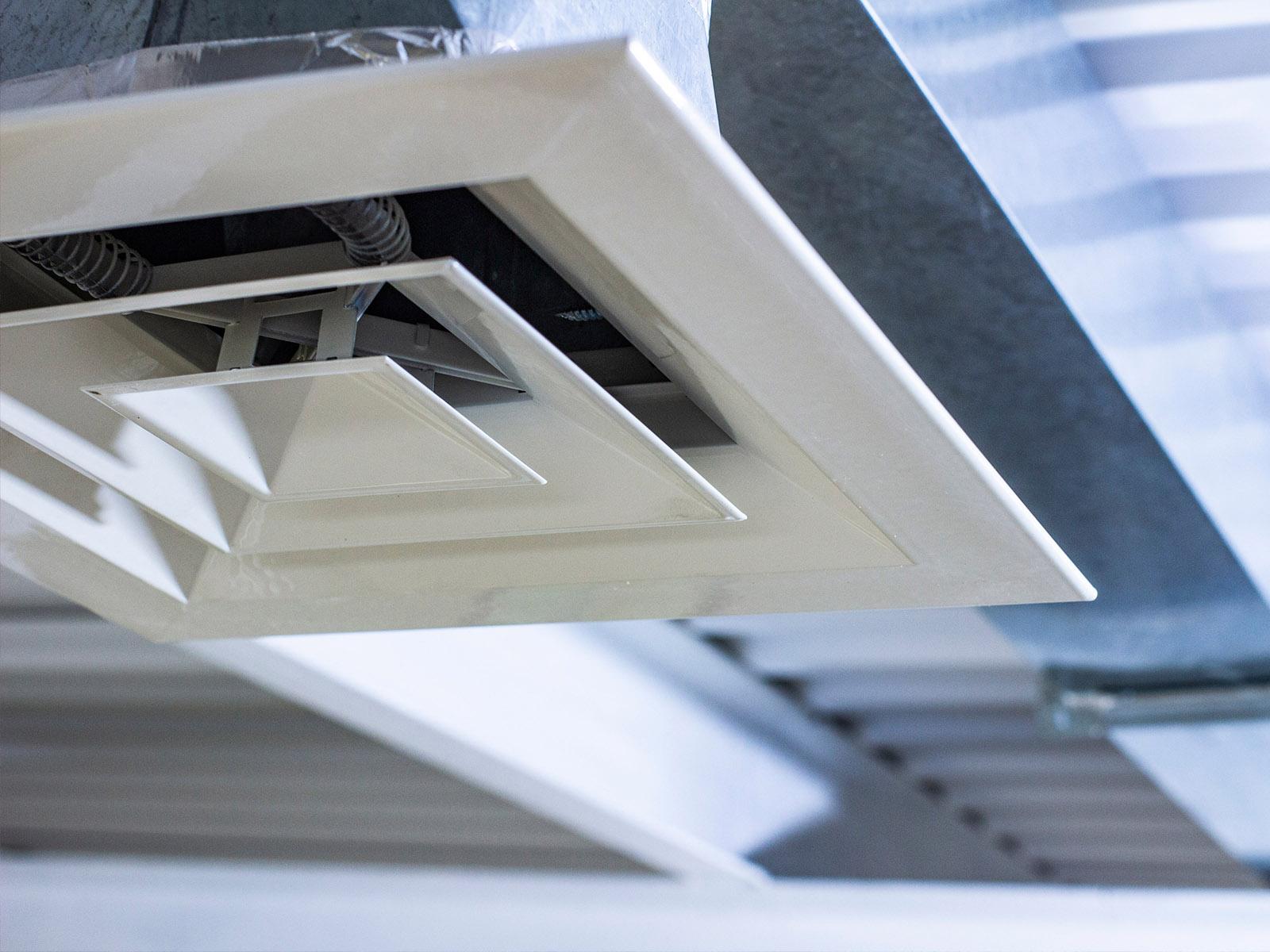Faster Air Exchange in Buildings Not Always Beneficial for Coronavirus Levels
Modeling study suggests vigorous ventilation can cause spike in viral concentrations

A modeling study suggests that rapid air exchanges in a multiroom building can cause virus levels to spike in rooms adjacent to the source room.
(Photo by Denis Torkhover | Shutterstock.com)
The Science
A study from a team of researchers at the U.S. Department of Energy’s Pacific Northwest National Laboratory suggests that, in a multiroom building, rapid air exchanges can spread coronavirus particles rapidly from the source room into other rooms at high concentrations.
The team modeled the spread of respiratory droplets that can contain SARS-CoV-2, the virus that causes COVID-19, via air-handling systems. They looked at the effects of three factors: different levels of filtration, different rates of outdoor air incorporation into the building air supply, and different rates of ventilation or air changes per hour. For downstream rooms, they found an expected clear benefit from increasing outdoor air and improving filtration, but the effect of increased ventilation rate was less obvious.
The Impact
Most previous studies examining aerosol spread of respiratory diseases in buildings have looked at particle levels in just one room. For a one-room building, increased ventilation is always useful to reducing their concentration. For a building with more than one room, however, air exchanges can pose a risk in the adjacent rooms by elevating virus concentrations more quickly than would otherwise occur. In this study, simulating the spread of aerosolized virus in a multiroom building, particle levels spiked in adjacent rooms within 30 minutes and remained elevated for up to approximately 90 minutes.
Summary
This team of scientists included building and HVAC experts as well as experts in aerosol particles and viral materials. The team developed a model of a three-room building containing well-mixed air and served by a central air-handling system. Then they modeled what happens after a person has a five-minute coughing bout in one of the three rooms, running simulations with particles of five microns floating through the air.
Introducing 33% outdoor air into the supply air reduced infection risk in downstream rooms by about 20 percent compared to the lower levels of outdoor air commonly included in buildings. The team noted that this result assumed that the outdoor air was clean and virus free.
Stronger filtration, reflected by the minimum efficiency reporting value or MERV rating of a filter, also decreased transmission risk. A MERV-13 filter decreased the peak concentration of viral particles in a connected room by 93 percent, to less than one-tenth of what it was with a MERV-8 filter.
Finally, rapidly exchanging air in the source room 12 times per hour reduced transmission risk within the room by 75 percent compared to only 1.8 times per hour. However, that rapid exchange also caused a spike in viral particle levels in connected rooms within minutes. This increased the risk of infection in those rooms for a few minutes to more than 10 times what it was at lower air exchange rates. The higher transmission risk in connected rooms remained for about 20 minutes in their simulation.
These results are specific to this model and the amount of viral particles a person sheds, the researchers say. Trade-offs in energy use for introducing more outside air or having stronger filtration can be quantified and weighted depending on circumstances.
Contacts
Leonard Pease
Pacific Northwest National Laboratory
fluids@pnnl.gov
Timothy Salsbury
Pacific Northwest National Laboratory
timothy.salsbury@pnnl.gov
Katrina Waters
Pacific Northwest National Laboratory
katrina.waters@pnnl.gov
Funding
Research was supported by the U.S. Department of Energy Office of Science through the National Virtual Biotechnology Laboratory (NVBL), a consortium of DOE national laboratories focused on response to COVID-19, with funding provided by the Coronavirus CARES Act.
Published: June 11, 2021
L. Pease, et al., “Investigation of potential aerosol transmission and infectivity of SARS-CoV-2 through central ventilation systems,” Building and Environment 197, 107633 (2021). [DOI: 10.1016/j.buildenv.2021.107633]